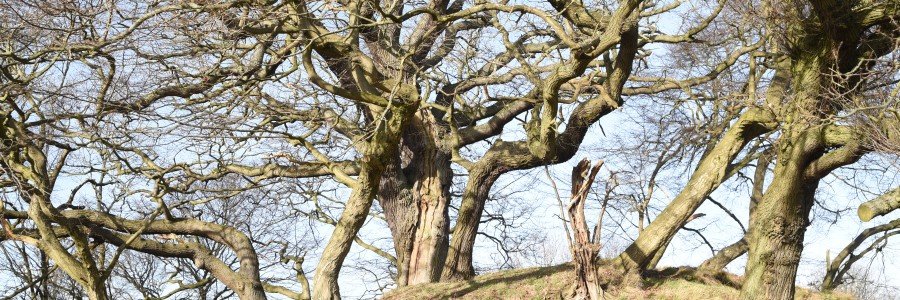Treehunting an island
In the south of the island of Rügen, around the villages Putbus, Pastitz, Lauterbach and Wreechen, stand the most beautiful, strongest and oldest oaks of Rügen. They can be hiked and experienced also only by public transport, even on weekends, without using an environmentally unfriendly car. Admittedly, a longer hike (25 km), which should be planned in autumn or winter, when the fields are accessible, as some fields have to be entered. Due to the short days in winter in the extreme north-east of Germany, the October and February are recommended.
From Lauterbach railway station into and through the woods of the "Goor" From the "Goor" overland to Pastitz The old oaks around Pastitz Rare and old trees in the castle park of Putbus The old oaks in the park To the "Winkelmann-oak" and back to Putbus railway station
From Lauterbach railway station into and through the woods of the "Goor"
From the station 200m back to the road, then right (east) towards the Goor. On the left a few English oaks (Quercus robur) (up to 4 m circumference), on the right an oak-covered barrow, forehead the lime avenue with some older lime trees (Tilia platyphyllos), leading towards the old bathhouse, a small "tree aperitif"...
In front of the Bathhouse at the entrance to the Goor formerly stood mighty oaks, which no longer exist today. We keep to the right "downwards" and follow the shore path for a while, breath the air of the lagoon and experience the waves, depending on the direction of the wind. Then to the left up to the steep coast, warning signs "danger of falling", eaten up by the trees,
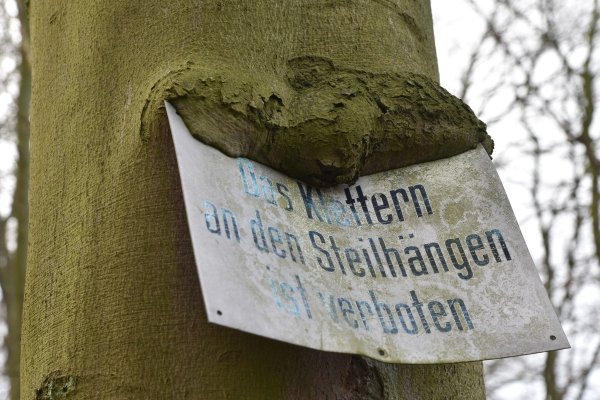
two old beeches (Fagus sylvatica), one of them upset in one of the past storms.
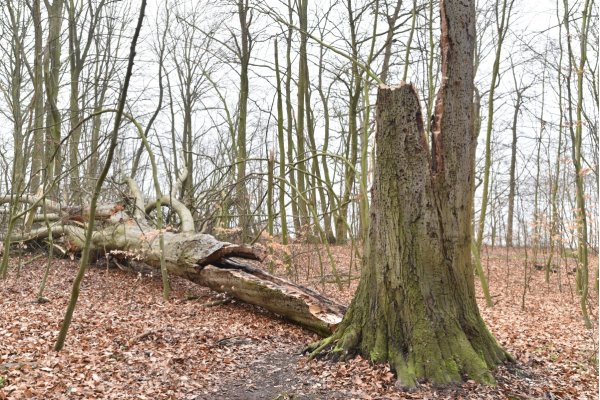
On the left hand, don't miss the footpath to the north, to the left more strong beeches and tall sweet cherries (Prunus avium). A bit further at the northern edge of a dip the first strong beeches (circumference up to 4m), below one with a conspicuous bark structure, a strange looking beech.
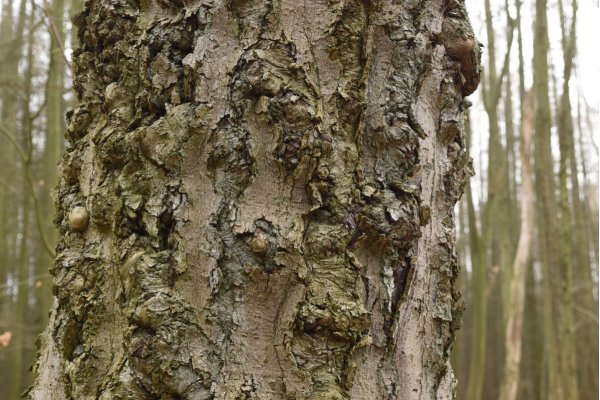
From here further to the left (to the west) in the direction of the edge of the forest, from a distance mighty trunks can be seen in the stock, more old beeches and oaks. Specimens up to 4.30 m girth and the first highlight the strongest beech (circumference 5.15 m) of the Goor and of the entire island with a thick proliferation at the cylindrical trunk an its mighty crown.
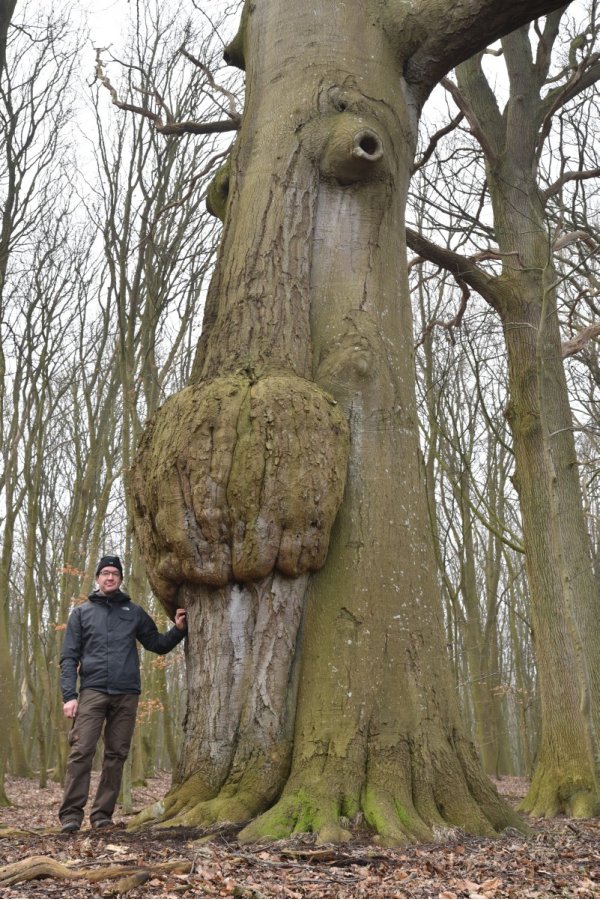
Like a kindly giant, it seems to look favourably at the hiker, who in turn pays the respect that the 250 years of age definitly demand. Over 200 years exposed to the west winds and storms and not bent or broken, a n impressing achievement and testimony of nature as architect.
Now it gets a bit complicated, our next destination, the so-called " deserted oak", is hidden and off the track, here you can find the GPS coordinates and some hiking maps and topographic maps show the tree also.
"And she's still alive" was my first thought when I found this oak again with a little detour due to my carelessness in dealing with my memory and knowledge of the location. The last time, almost exactly ten years ago, in summer 2009, a large part of the crown had already died. Only a few branches in the lower trunk area and some twigs at the major branches of the still green, actually a sure sign for only a few more years of vitality. But, one can be mistaken, which does not mean that its life is limited, especially as the bulbous trunk is now full of mushrooms. It is an English oak 'Quercus robur* and with a circumference of 6.10 m it is the strongest oak of the Goor.
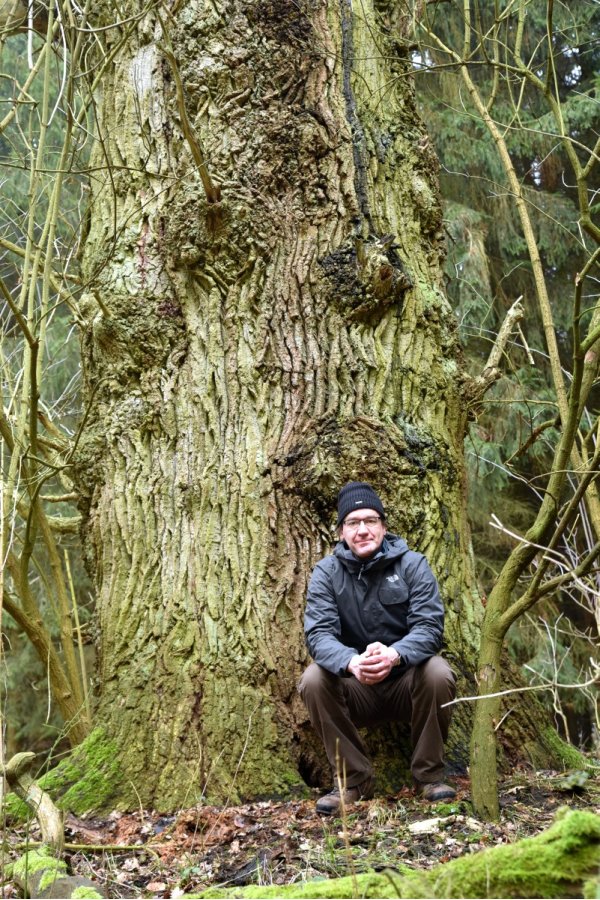
Only some hundred meters further east stands the so-called umbrella oak, also an English oak. Once free and solitary standing on a field, over the years more and more "surrounded" by afforestation, meanwhile strongly ingrown, later again appreciated and released. In 2009 we had seen this oak still grren and vital, but in the meantime we had already heard that it had died completely. Unfortunately this is true, but its trunk is still standing, with the round and wide crown that gave it her name. Its habbit and appearance will continue to change considerably due to further breaking of strong branches. It will probably not be able to increase its 5.92 m circumference any more.
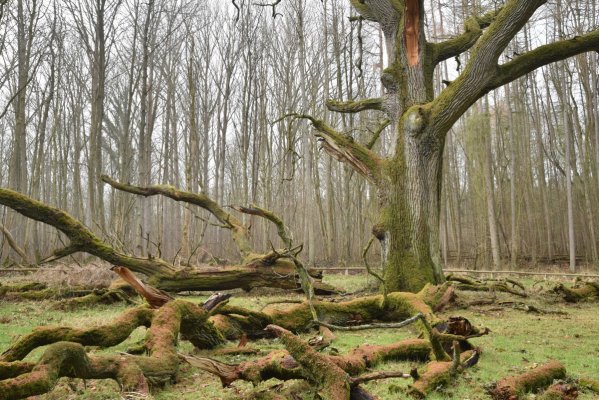
From the Goor overland to Pastitz
We have a long walk ahead of us. We leave the Goor to the north-west, via a meadow path to Vilmitz, with its large and old church. Cemetery and parish garden are home to some interesting trees. Behind the end of the village we have to take a short piece along the partly heavily used road, compensated by the magnificent, and in this size rare, hornbeam Carpinus betulus avenue.
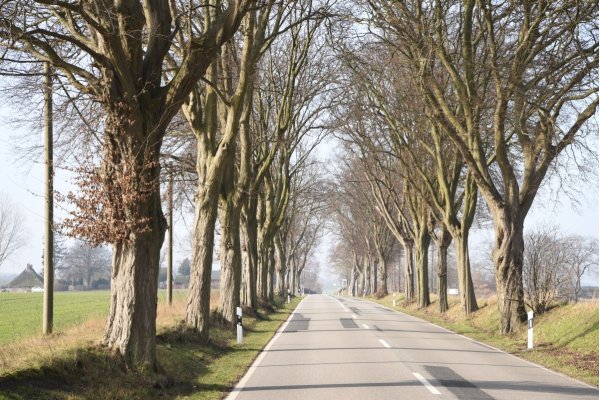
Behind Lonvitz a dirt road branches off to the northwest in the direction of Pastitz. Beautiful oaks and beeches accompany us, shortly before the level crossing of the "Rügensche Kleinbahn" two magnificent hornbeams on the left hand side.
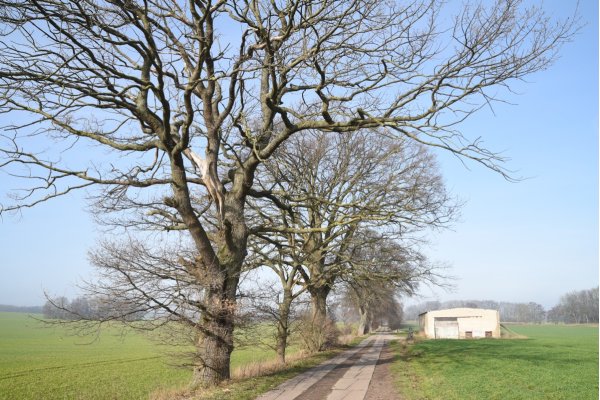
If the field east of the road is accessible (e.g. harvested), a detour north of the railway line to the large field woods is worthwhile. Hidden in it, old barrows, and in the eastern area stands an impressive English oak with a gnarled crown and a trunk circumference of 4.89 m. On the left over the field we see the restored manor house and in a few minutes we reach the old manor village Pastitz.
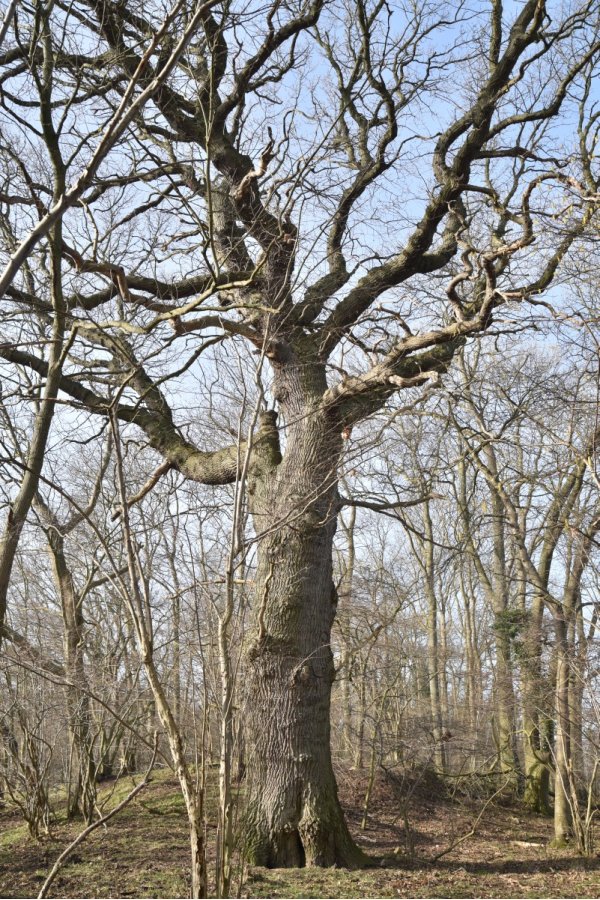
The old oaks around Pastitz
From the village a detour to the north is worthwhile (optional), to the so-called Cave oak. Unfortunately you have to walk the way to the oak twice (there and back). The solitary English oak standing in the middle of the field lost its crown a long time ago, the main shoot died and broke off. The newly formed secondary crown gives the tree a bizarre appearance. Despite this handicap, the oak tree, a natural monument, has already reached a considerable girth of 5.89 m.
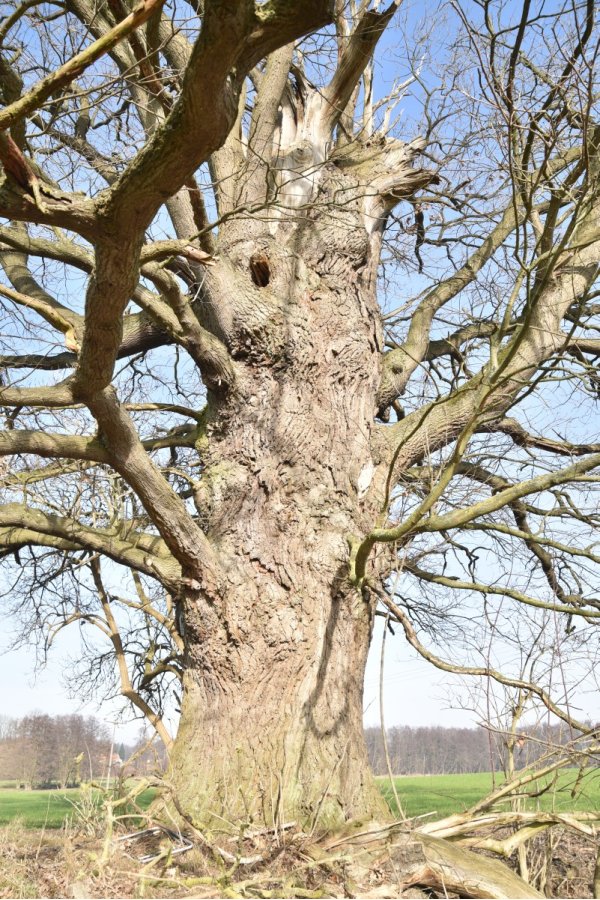
From the northwestern edge of Pastitz, before the railway crossing, the route goes towards Putbus parallel to the Railway rails across a meadow and then along the edge of the field further south to the large field oak. Arriving in Putbus by train from Bergen, we could always see this oak, but for various reasons since our last visit of the tree in 2004 never reach it again. What a joy for me to be able to experience this mighty tree at close range after so many years passed by. Always a "Me-and-the-tree-Selfie" worth, even if one can get quite out of breath thereby.
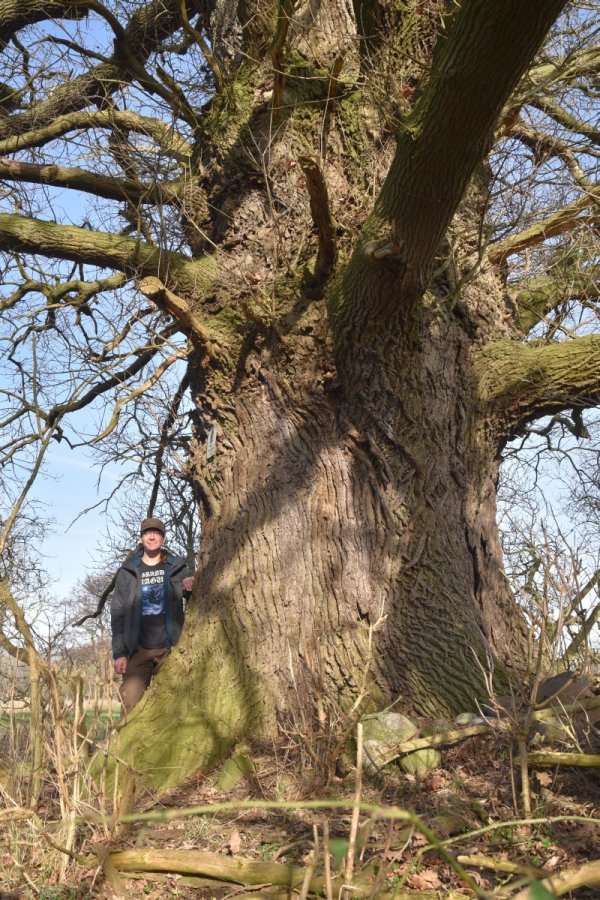
More beautiful but not so strong oaks stand further west and south, both are also protected as natural monuments. The beautiful oak on the creek named strong oak and the so-calledowl oak. We continue from here, again over the tracks of the narrow Railway line, pass two more barrows with gnarled old oaks and reach Putbus.
.
At the end of our visit to the five remarkable old oak trees around Pastitz, a picture of the strong oak trees:
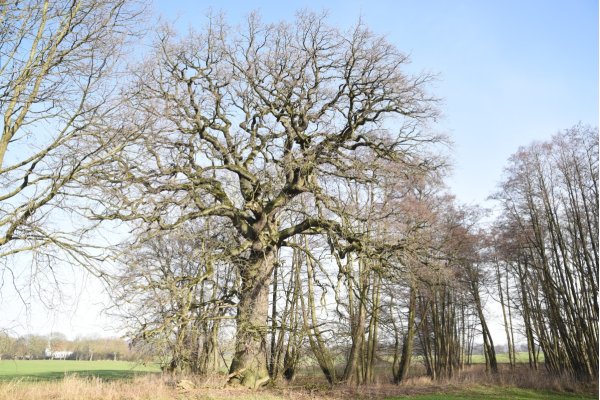
And not without admiring Putbus' magnificent oak avenue leading to Lonvitz.
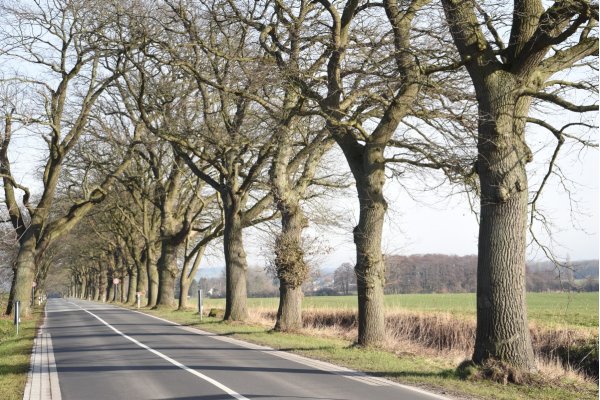
Rare and old woods in the castle park of Putbus
Past the railway station, directly into the wonderful Putbus Castle Park with its many old and rare trees and shrubs, a dendrological treasure trove. I would like to be brief here and only show a few pictures, a closer look at the trees in the park fills a blog entry of its own.
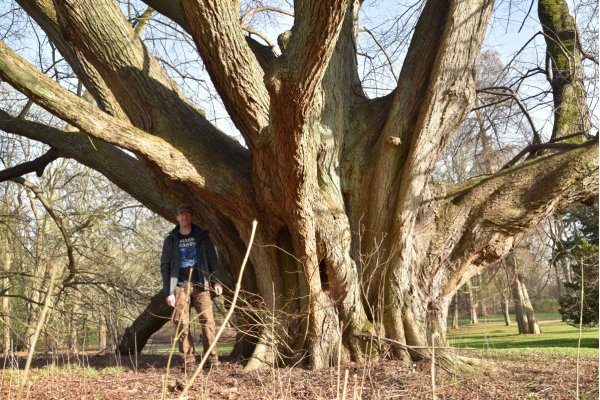
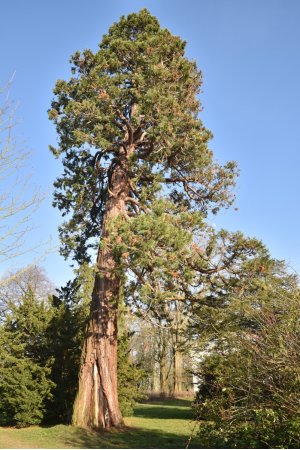
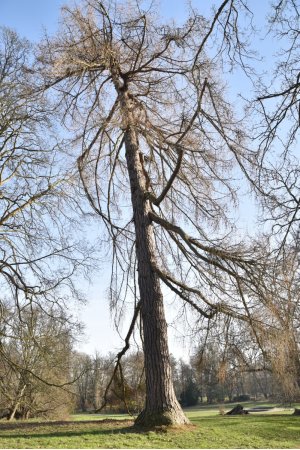
Therefore, quickly continue to one of the highlights of the park, the old oaks.
The old oaks in the castle park
They stand near the northwestern entrance of the park, five veteran oaks in a loose row, two of them close to the path, flanking left and right a stone bench. They are also called the Thousand Year Oaks and were already famous over 100 years ago and a popular tourist attraction.
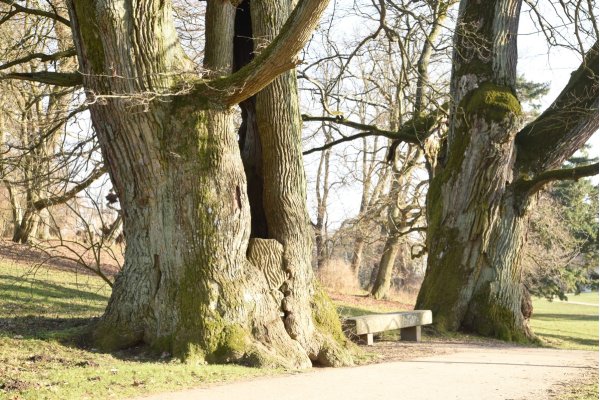
More detailed information about their story can be found here (German). Also links and pictures to the other three oaks.
Them being known and popular excursion destinations already around and after 1900, and so postcards showing the trees were printed back then. These were sent as holiday greetings and are today interesting collector's items and histrical sources about old trees. To the thousand-year-old oaks in Putbus exist a larger number of different postcards, one is to be seen here.
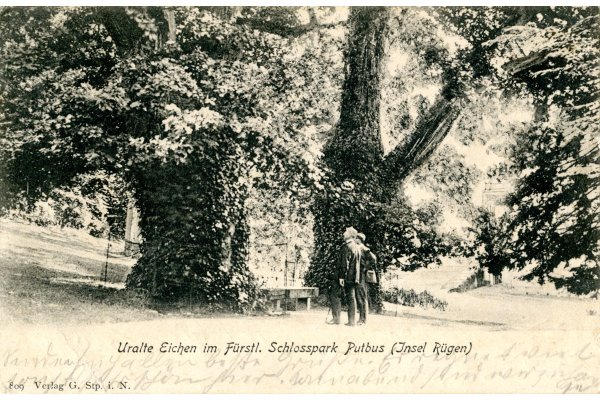
From here it is not far to the last big old oak, the Winkelmann oak. Even if the sun was already standing low, I wanted to visit this special tree.
To Winkelmann oak and back to Putbus station
We head to the southwest from the park, always along the park/forest and field edge and then take a footpath to the left between the tree planation and the edge of the forest and after about 250 meters be careful not to walk past the tree that stands at the woods edge to the left. Here it is, majestic, mighty, touching and despite the proximity to the Putbuser Park a little lonely. The Winkelmann oak in the yellow light of the setting sun.
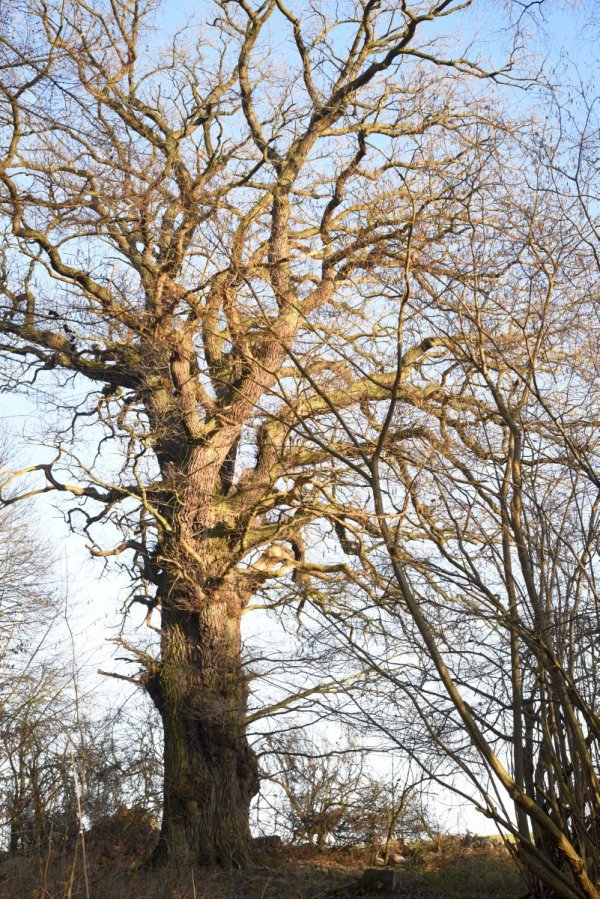
Last but not least, an evening walk through the now quiet and empty park, in the last daylight, back to Putbus station.
All photos and texts on this site are, unless otherwise expressly noted, protected by copyright. Each publication requires the permission of the author/photographer.
